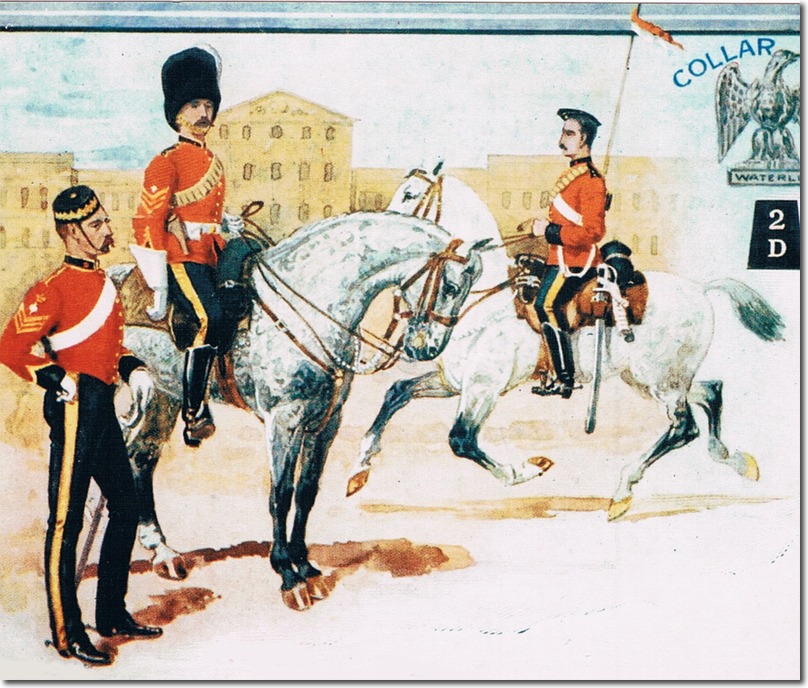|
|


|
|
This detail from a postcard published by W&AK Johnston Ltd of Edinburgh dates around the turn of the century and gives us useful information on the colours of the uniforms usually to be found only in black and white photos. The Greys left Scotland to go to South Africa in late 1899 and this illustration may show the uniform earlier in that year or the uniform of the men left behind at the depot in Edinburgh. It definitely dates before 1902 when the white leather pouch-belt was discontinued. The silver collar badge features in the top right corner. That was taken into use around 1900, and the figures have a suggestion of a badge on their tunic collars although it appear as a red smudge. The dating of this picture as 1899 is thought to be correct because of the ammunition bandolier worn by the mounted sergeant in dress uniform. This was issued to the regiment for the Boer War and replaced by a leather one in 1903. The sergeant also has a brown leather holster on his waist-belt for a pistol. This is unusual and may reflect a need to try various changes to the way weapons were carried at this time. He also has the small white expense ammunition pouch on his belt. He has a blue cloak rolled up on the front of his saddle while the private trotting past has it strapped to the back of the saddle. This blue cloak was changed to a khaki greatcoat in 1904.
The senior NCO standing on the left has three chevrons and a crown as well as a silver Eagle arm badge. This denotes the rank of squadron sergeant major, a title that changed from troop sergeant major in 1892. He has gold braid on his collar and cuffs, reflecting his status as 2nd Class Staff. His pill-box forage cap has a gold zig-zag and top button instead of the white cap-band worn by the rank and file. The private wears an undress frock which is red with blue collar, cuffs and shoulder straps. He also has the canvas ammunition belt on his left shoulder and a white haversack belt on his right shoulder. His field service cap is all blue with yellow cord edging. He has a lance and a sword which is kept on the saddle while mounted. There is a coiled white tethering rope behind the sword and he has shoes strapped to the font of his saddle. This uniform features in many photos of the Greys in this period and was the most common form of dress for drill and exercise. |
Armed Forces | Art and Culture | Articles | Biographies | Colonies | Discussion | Glossary | Home | Library | Links | Map Room | Sources and Media | Science and Technology | Search | Student Zone | Timelines | TV & Film | Wargames